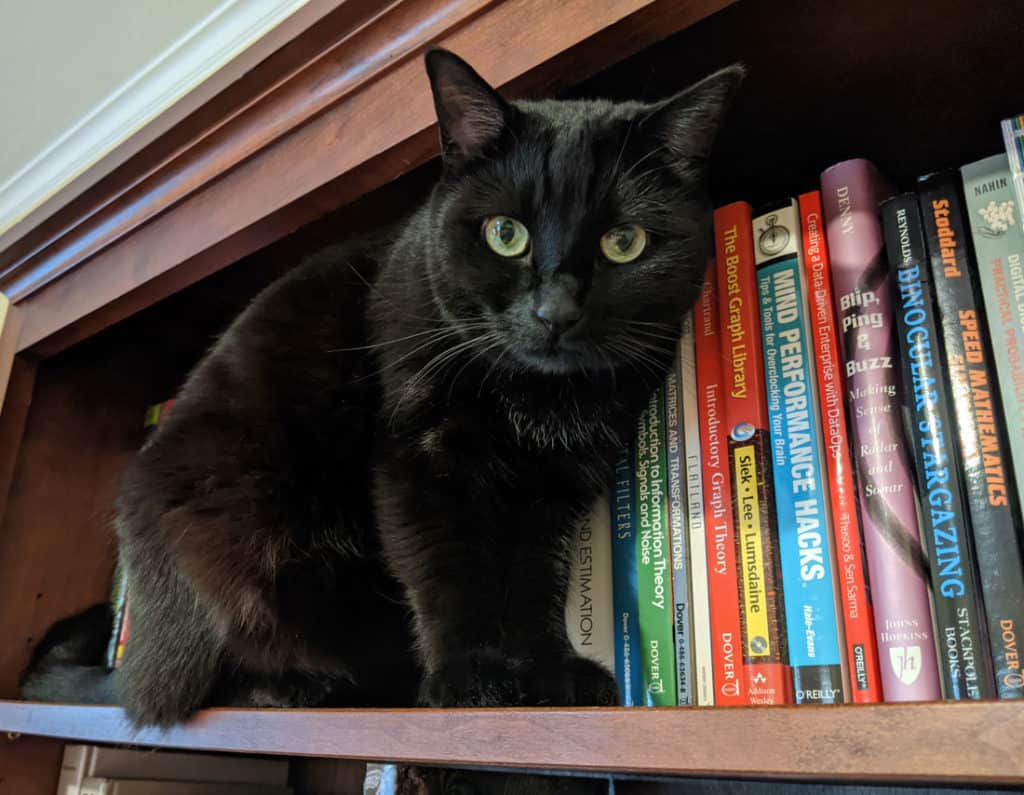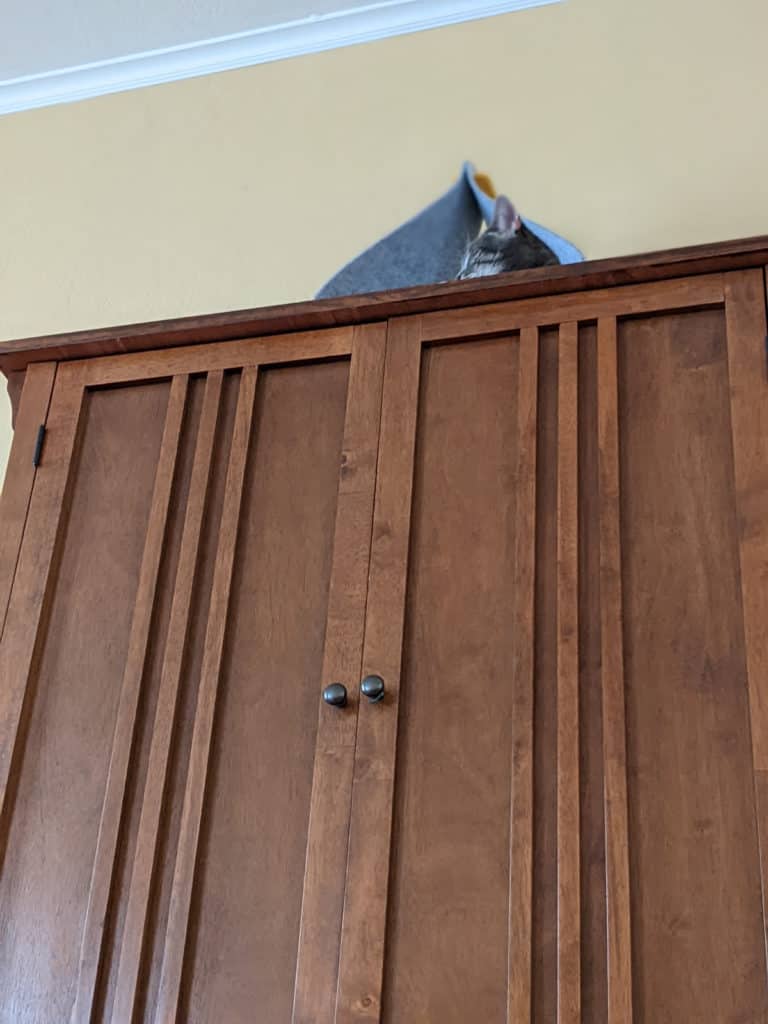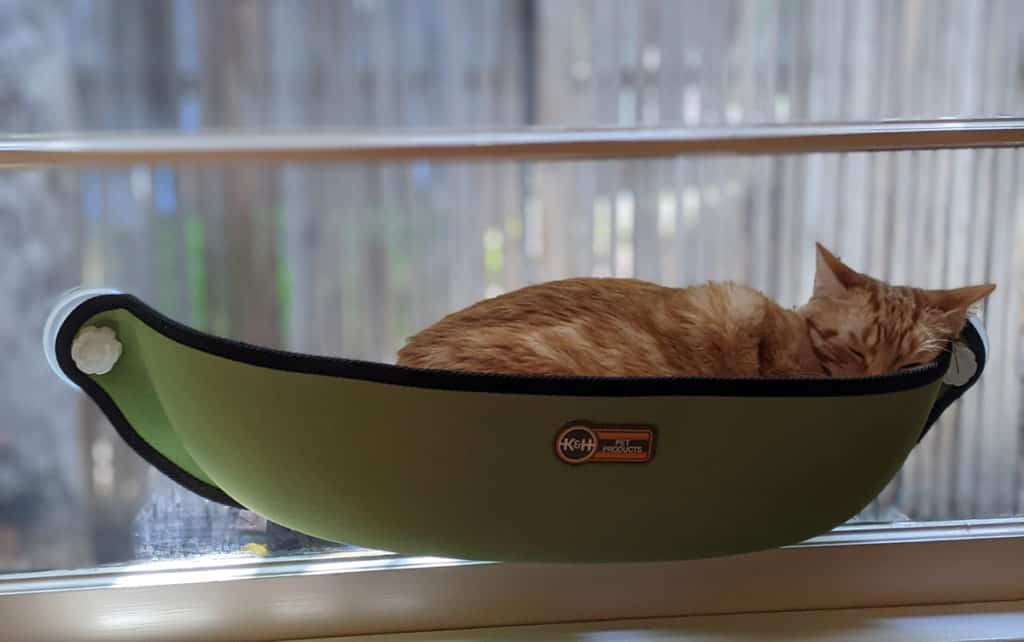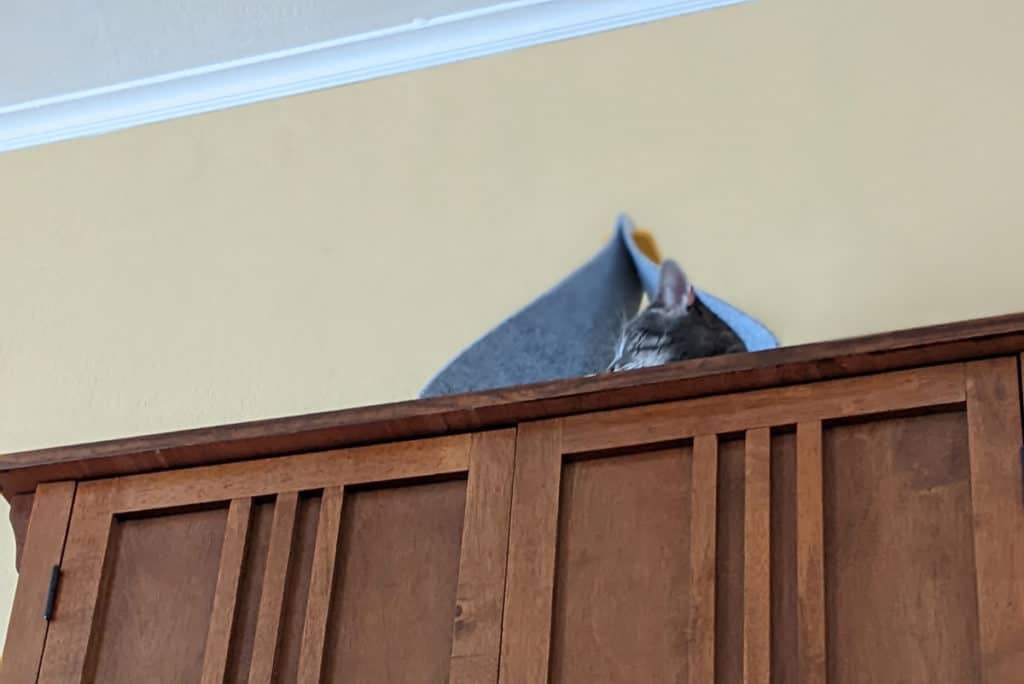Cats love heights. At some point, your cat will try to get to the highest spot they can in your house. That might be your bookcase, your mantle, the top of your fridge, or on top of your dresser. In fact, your cat may even seek to perch on top of your shoulders.
Vertical spaces inside a home are an important part of the cat’s living zone.
There are a few reasons as to why cats like to be in places that are high up.
Cats Like to Observe
Cats are natural observers. They like to spend long amounts of time watching and listening to what’s going on around them. Being up high provides cats with a better viewpoint from which they can observe the coming and goings of the household.
In the wild, heights are a place from which a cat can hunt. Being up high provides a platform from which the cat can observe prey.
Being up in a tree or other high place is also a safe place away from land-based animals that might hunt the cat. (Related: How Do Bobcats Climb Cactus?)
The urge to climb is instinctual in your cat.
Safety
A big reasons for why your cat likes to be up high is that it provides a sense of safety. Perches provide safe vantage points away from humans and other animals.

Cats like to be able to see and feel safe from being attacked or bothered by other cats, dogs, and people in their households. Perches that are high up and isolated from other animals and people allows the cat a sense of safety.
Feeling safe is particularly important when your cat wants to sleep and not be worried about being attacked or bothered.
Provide Perches for Your Cat’s Enrichment
It’s important to provide places in your house where your cat feels safe and can retreat when they want some quiet.
Cat trees are one way to provide perches for your cat. Cats love the height of tall cat trees as a way to rest up high. Just make sure the cat tree is stable and won’t tip over.

Other options for providing perches is to make room on secured furniture like a dresser or a tall console. Place a cozy bed on top of the furniture to provide your cat with a comfortable place to snooze.
Cat window beds are another place to provide a secluded place to perch. These beds have suction cups that secure the bed to the glass panes of windows.
Plus cat window beds have the added benefit of providing your cat with a nice viewing platform. I have a bird feeder set up outside the window where my cat likes to snuggle in his window cat bed.

Try to provide your cats with several option that are elevated so that your cats have some enriching choices. Make sure that the perches are stable and aren’t at risk of tipping over.
It’s also very important to make sure your cat has a safe way to both jump up and jump down from these perches. Many cats find it much easier to climb up high and harder to climb back down (cat stuck in a tree, anyone?).
Cats Climb for Safety and Observation
As a small mammal, cats are both predator and prey, leading them to naturally seek out elevated spots for observation and safety. It’s important for your cat’s well being, to mimic this capability inside your home by provide spaces where your cat can climb to perch and sleep that is away from other animals and people.
Read next: How High Can Cats Jump?
References
Herron, M. E., & Buffington, C. T. (2010). Environmental enrichment for indoor cats. Compendium (Yardley, PA), 32(12), E4.
Rochlitz, I. (2005). A review of the housing requirements of domestic cats (Felis silvestris catus) kept in the home. Applied Animal Behaviour Science, 93(1-2), 97-109. https://doi.org/10.1016/j.applanim.2005.01.002







